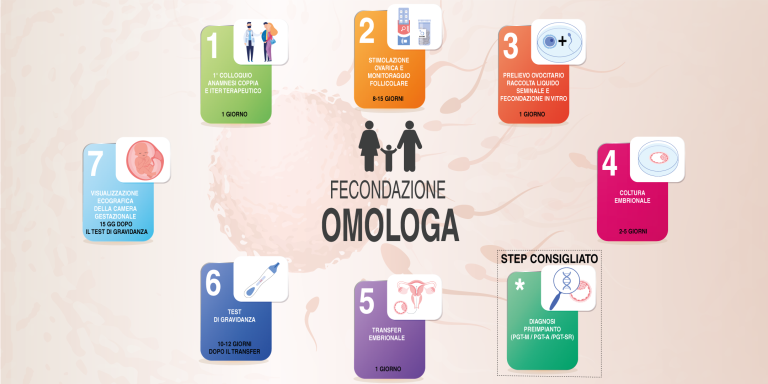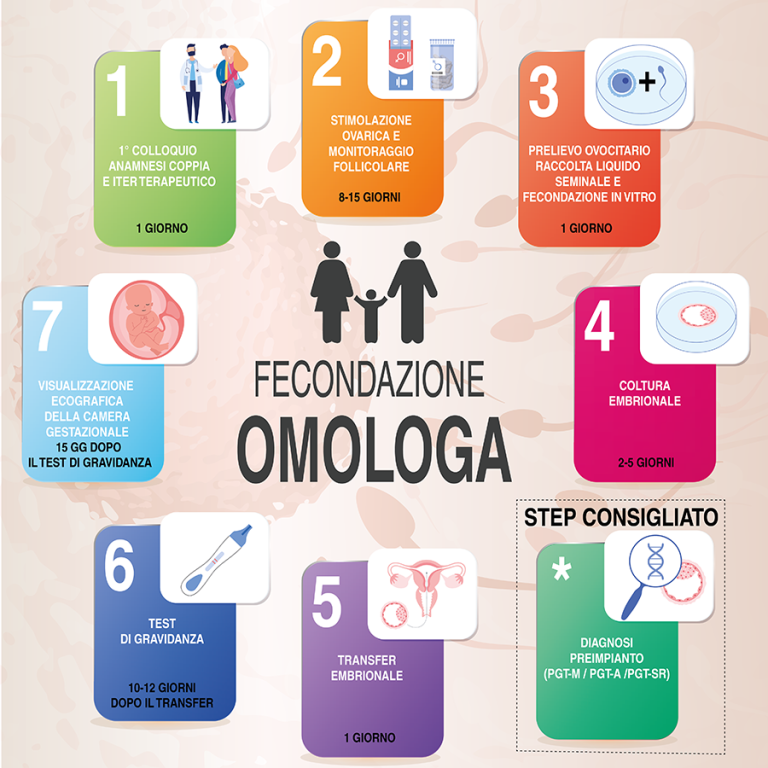Fecondazione Omologa: significato
La fecondazione omologa, o fecondazione assistita omologa, è
una tecnica utilizzata in PMA (procreazione medicalmente assistita) nella quale
viene impiantato l’embrione formatosi dallo spermatozoo e dall’ovulo provenienti
dalla coppia in cura.
Fecondazione Omologa: costi
I costi della fecondazione omologa comprendono:
• Anamnesi della coppia
• Ciclo PMA (FIVET-ICSI) e Transfer
• Pacchetti monitoraggi
• Prestazione anestesiologica
• Prestazioni di laboratorio di embriologia
I costi del trattamento, e i dettagli delle singole voci, possono essere consultati qui.
Fecondazione Omologa: come funziona

01
Colloquio, anamnesi e iter terapeutico
Il medico fornisce le informazioni sui trattamenti, analizza gli esami preliminari e aiuta la coppia nella scelta del percorso.
01
Colloquio, anamnesi e iter terapeutico
Il medico fornisce le informazioni sui trattamenti, analizza gli esami preliminari e aiuta la coppia nella scelta del percorso.
02
Stimolazione ovarica e monitoraggio follicolare
03
Prelievo ovocitario, raccolta liquido seminale e fecondazione in vitro
04
Coltura embrionale
05
Transfer embrionale
La metodica di trasferimento intrauterino, semplice e indolore, consiste nell’introdurre un sottile catetere nella cavità uterina.06
Test di gravidanza
07
Visualizzazione ecografica della camera gestazionale
Fecondazione Omologa Roma
Stai cercando una clinica che possa effettuare una fecondazione omologa a Roma?
Altamedica PMA offre un primo colloquio telefonico gratuito, per capire le necessità e le problematiche della coppia,
consigliando così il miglior percorso possibile.
Info e prenotazioni
Richiedi informazioni. Il nostro staff risponderà entro 24 ore.